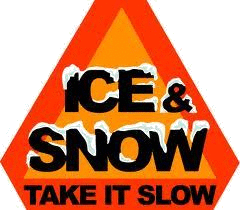This Thanksgiving holiday, more than 46.3 million people will travel at least 50 miles from home during the Thanksgiving weekend to spend the holiday with their family and friends. Here are some travel and kitchen safety tips to remember this holiday.
Travel Safety Tips
– Buckle seat belts – All drivers and passengers should wear seat belts every time when traveling in a vehicle. Wearing a seat belt is one of the best defenses to prevent injury and death in a crash.
– Protect child passengers – If you’re traveling with children, remember the best way to protect them in the car is to put them in the right child safety seat, and use it the right way. All children 13 and younger should ride in the back seat.
– Don’t drink and drive – Every 45 minutes someone in the United States dies in an alcohol-impaired-driving crash. Be responsible and don’t drink and drive. If you plan to drink, choose a designated driver before going out.
– Avoid Distraction – According to NHTSA data from 2012, 10 percent of fatal crashes and 18 percent of injury crashes were distraction-related. Distracted driving can be anything that pulls your attention away from driving, including cell phone use, texting while driving, eating, drinking, and using in-vehicle technologies and portable electronic devices.
– Avoid the “No Zone” – The area around large trucks and buses where crashes are more likely to occur. It is critical that all motorists share the road safely with large trucks and buses by giving them plenty of space to maneuver. Avoid lingering in blind spots where you can’t be seen, following too closely or making sudden or erratic lane changes. Safety, literally, is in the hands of every driver.
– Additional Safety Tips – Weather-related crashes accounted for four percent of fatalities on Thanksgiving last year.
When deep frying a turkey, make sure you do it as safely as possible. The Illinois Fire Service Institute and State Farm teamed up to illustrate the fiery dangers associated with common deep frying mistakes.
http://youtu.be/hQYTMFCLy5E
THANKSGIVING DAY FIRES
• Cooking is the leading cause of home fires on
Thanksgiving Day.
• Cooking fires nearly double on Thanksgiving
Day, occurring more than twice as often than
on another day.
• Cooking fires are the number one cause of
home fires and home fire injuries.
• Thanksgiving Day home fires cause more
property damage and claim more lives than
home fires on other days.
• Eighty percent of Americans don’t realize that
home fires are the single most common
disaster across the nation.
• The number of home fires the American Red
Cross has responded to has risen 10% since
2000.
• Every two and a half hours someone is killed
in a home fire. In a typical year, 20,000
people are injured in home fires.
• Having a working smoke alarm reduces one’s
chances of dying in a fire by nearly half.
Safety tips
- Stay in the kitchen when you are cooking on the stovetop so you can keep an eye on the food.
- Stay in the home when cooking your turkey and check on it frequently.
- Keep children away from the stove. The stove will be hot and kids should stay 3 feet away.
- Make sure kids stay away from hot food and liquids. The steam or splash from vegetables, gravy or coffee could cause serious burns.
- Keep the floor clear so you don’t trip over kids, toys, pocketbooks or bags.
- Keep knives out of the reach of children.
- Be sure electric cords from an electric knife, coffee maker, plate warmer or mixer are not dangling off the counter within easy reach of a child.
- Keep matches and utility lighters out of the reach of children — up high in a locked cabinet.
- Never leave children alone in room with a lit a candle.
- Make sure your smoke alarms are working. Test them by pushing the test button.
Got Your 6 Communications wishes everyone a safe and happy Thanksgiving. And remember, the only belt you should unbuckle this, and every Thanksgiving, is the one at the dinner table, not the one in your car


